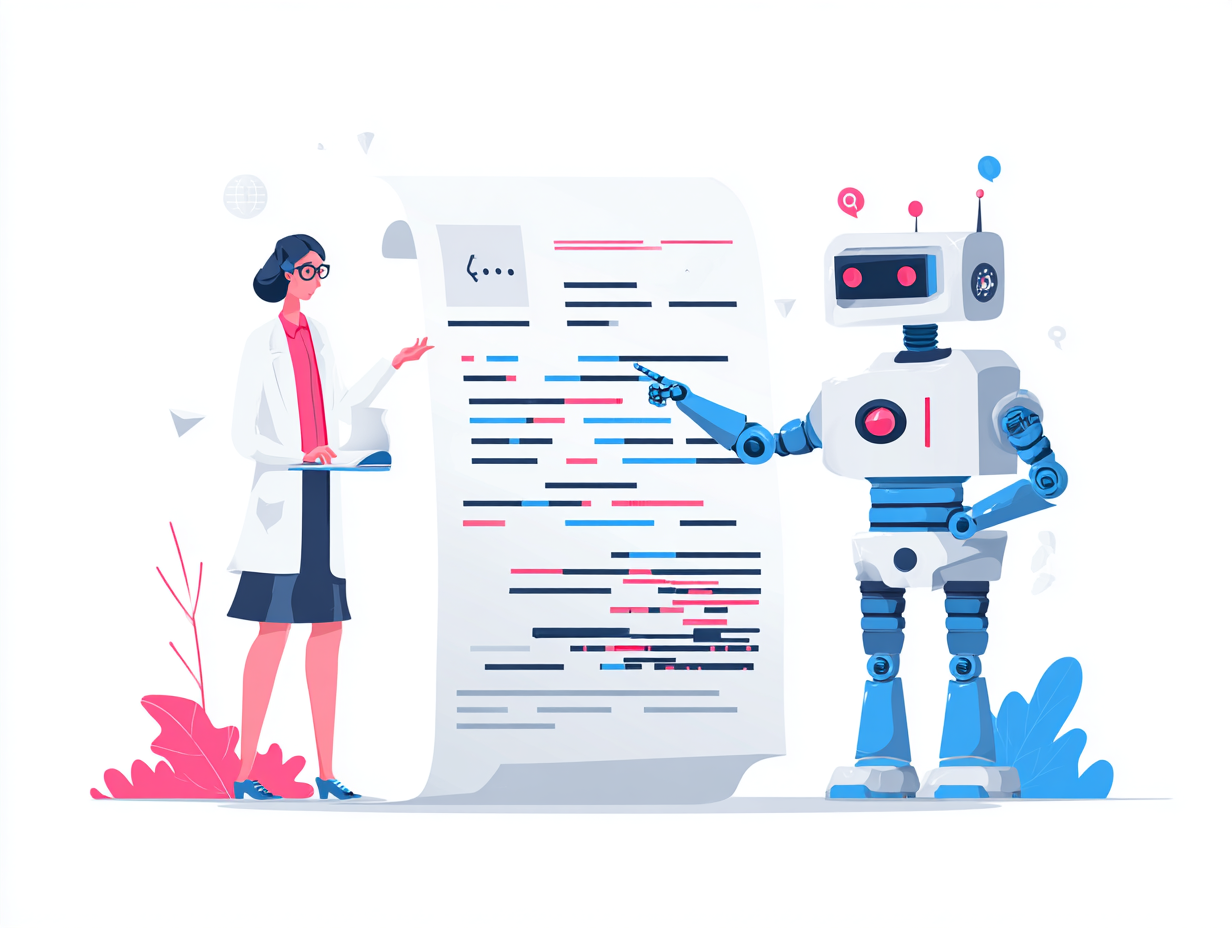Today the vast majority of the content — anything from short texts in social media to specific articles and news — is increasingly generated by Artificial intelligence. AI is a really great tool to accelerate the writing process however its result should be always subject to checking.
Why? The explicit full generation of texts does not inspire confidence in readers and undermines the authority of the source. They become sceptical about the information they receive and the author’s knowledge, which leads to a loss of loyal audience, customers or opportunities.
In this article you can find some tips on what to look at to spot without AI-detection tools whether the text was generated or written by humans.
What should I pay attention to?
Without mentioning that any text should be checked for factual errors, illogical claims and the appropriateness of expressions when it comes to humor or metaphors, we would like to draw your attention to the following basic points that will help you when it comes to detecting AI:
Structure and Language
AI uses awkwardly formal synonyms, overused cliches, or unnatural phrasing to sound authoritative. It follows predictable patterns giving a clear answer to a clear question without any digressions.
Example:
Question: What are your hobbies?
Humans: “I like swimming, cooking, going out with my friends…”
AI: “I have many hobbies such as cooking, doing sports…”
Unnecessary Complexity or Wordiness
AI usually over-explains simple concepts or uses excessive complex terms instead of simple words to deliver the idea and create a sense of trustworthiness. Humans just ease their sentences for others to better understand the core idea.
Example:
AI: “The utilization of technological advancements facilitates the optimization of workflow efficiencies.”
Humans: “Tech tools just make work easier.”
Repetition or Rephrasing
AI often repeats the same argument in different words to feel space while humans introduce new insights giving logical reasoning.
Example:
AI: “Time management is essential for productivity. Managing one’s time well leads to better efficiency.”
Humans: “I used to multitask constantly — until I realized I was half-doing everything. Now, I block my calendar thoughtfully.”
Impersonality
AI tends to summarize rather than argue. It produces neutral, overly formal texts with vague statements that sound more like introductory sentences that are full of water and lack substance.
Example: “In today’s fast-paced world reading is beneficial for cognitive development and knowledge acquisition.”
Emotions
Humans develop their idea making it catchy, with something alive that immediately captures the reader's attention and evokes empathy. These texts are not dry answers, but rather a written live conversation, even on complex topics.
Example:
AI: “Additionally, it is important to consider various factors when making a decision. Furthermore, one must evaluate all possible outcomes.”
Humans: “Decisions are messy. Sometimes you just have to go with your gut — no spreadsheet can predict everything.”
Why human detection isn’t reliable?
Without special AI detectors, humans can identify AI text with an accuracy of 50-70% on average (though the actual accuracy is lower and more variable), but this value decreases as the quality of the models improves. Sophisticated and well-structured texts produced by profound versions of AI tend to seem more natural and human-like that makes it difficult to identify the origin.
Even unusual human writing may be mistaken for AI. For example, overly formal or structured texts that are needed for some special occasions or studies can give false positives just because it’s not typical for normal situations. In other respects, without clear errors, detection relies on gut feelings, which can be unreliable due to its subjectivity.
Additionally, the methods mentioned above only highlight general patterns — traits that may appear more frequently in AI-generated texts but their list is non-exhaustive. Accurate detection requires analyzing a multitude of factors, including semantics, structure, style, and context, in a way that goes far beyond human capability.
To guarantee reliable verification, it’s better to use a combination of style analysis and specialized detectors. At It’s AI we account for all these dimensions (and more), combining deep textual analysis with advanced algorithms to ensure the detection accuracy of over 98%. It’s AI is also currently the most accurate AI detector according to RAID benchmark (ACL paper, 2024), outperforming other solutions like GtpZero, Originality, Copyleaks etc.
Conclusion
In short — yes, sometimes people can spot AI-generated texts as there are some clues that might help but it doesn’t mean that they always work. The average person’s accuracy in detection is surprisingly low and the hints are inconsistent and depend on the context.
Relying solely on your own guesswork risks both false positives and missed AI content.
The best approach to this issue is a reliable AI detector. For truly dependable results, tools like It’s AI analyze text with more precision than human can, ensuring you spot what the naked eye might miss. After all, it's a good way to double-check yourself and eliminate the consequences of machine writing.


